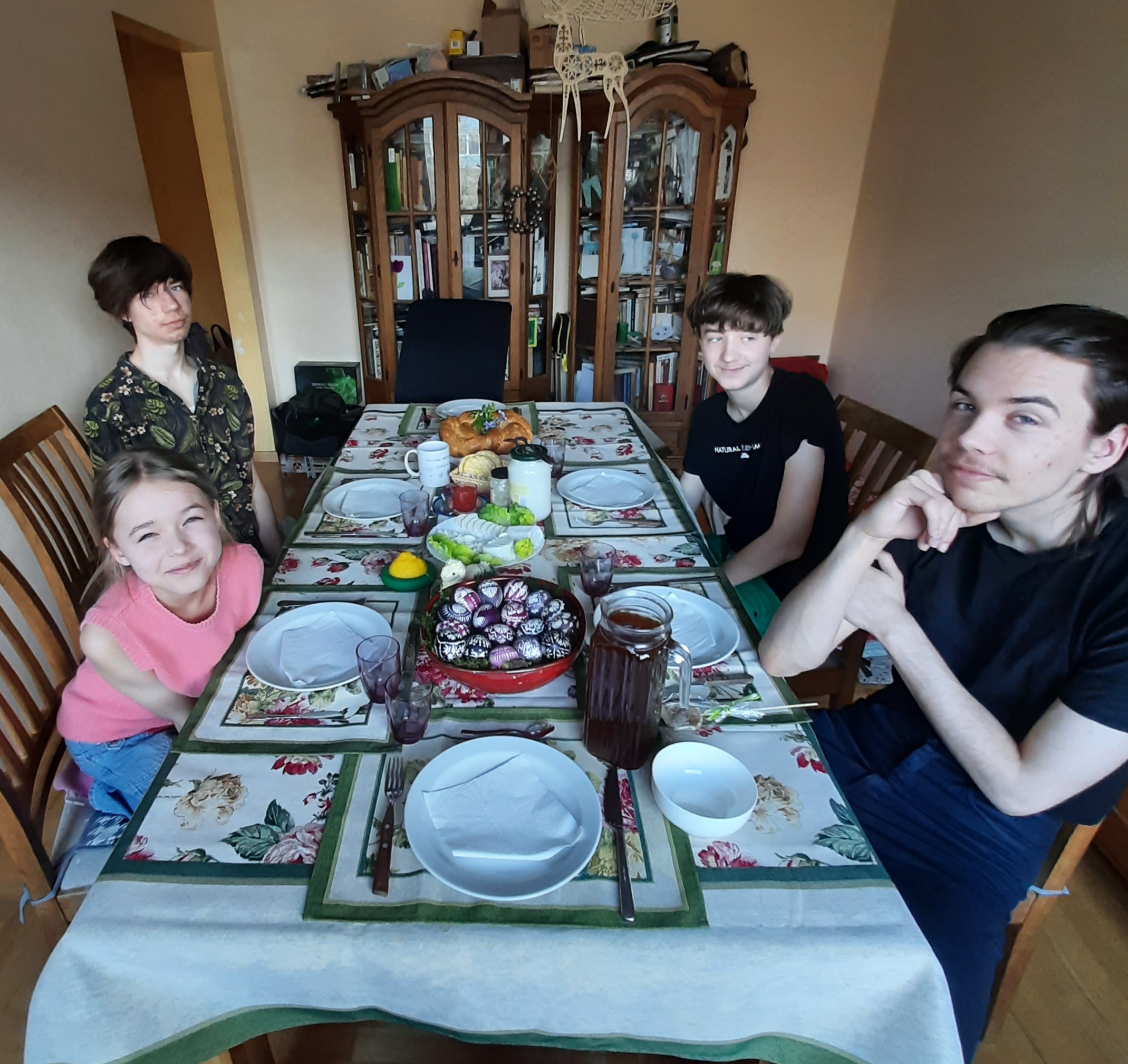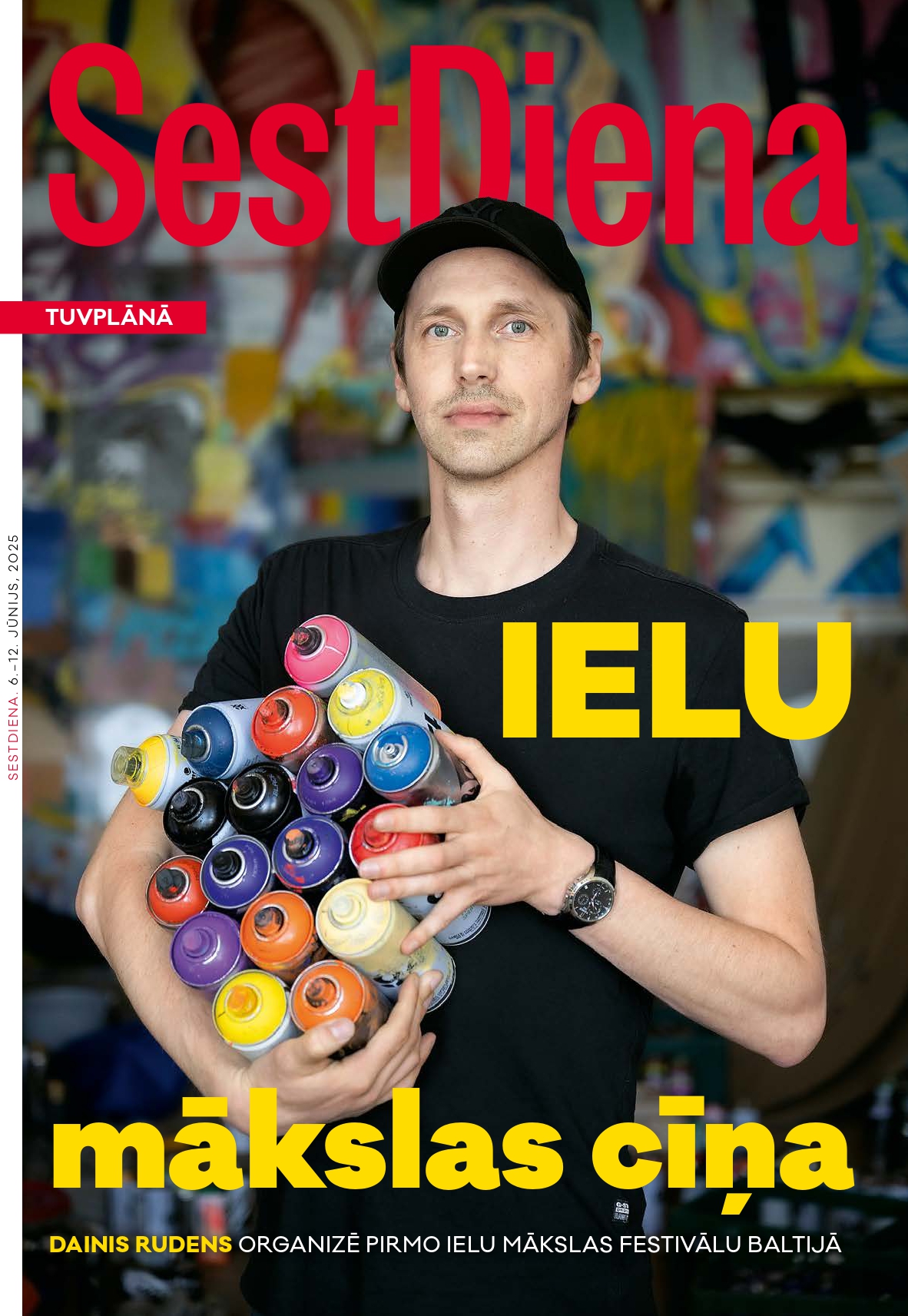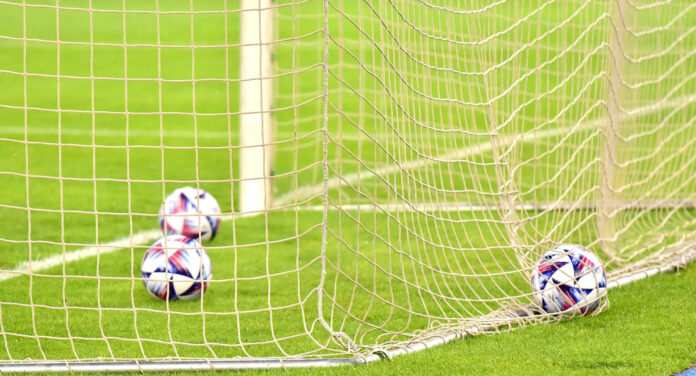Easter traditions will live if you show you the fun side of them

– You have a wonderful family – husband Darius, four children. Say at least a few words about them all.
– Man Darius – psychologist. Two eldest sons – Joseph and Dawn – students. Joseph studies biochemistry, and dawn – computer science. Paul – ten, gymnast. Dainora – fifth. The sons graduated from music school – playing a valtorna, viola and violin, and her daughter continues her studies. So everyone knows how to play. Son Joseph recently began learning to play a bagpipe. I play with kankles, rags, horns, dash. Where do we use those musical abilities? Ogi Virvytė folklore ensemble, which we all visit for many years.
– Loreta Sungailienė, a promoter of Lithuanian ethnic culture, is led by the folklore ensemble of Virvytė. Did Loreta interest you all the old Lithuanian folklore?
– We are also very grateful to Loreta, but most of all – my family: parents, grandparents, great -grandmother. I made friends with Lithuanian folk folklore in my teenage years. The classmate invited her to support her company and go to her mother’s work in a folklore ensemble. Small it was – only four women and both. He was led by renowned folklorist Inija Trinkūnienė. What I heard there saw, I was very close to me. Although the ensemble had only existed for a couple of years, the love folklore was already sown in me. I followed that path along with the Trinkūnai – with Inia, her husband John and the ceremonial folklore group « Kūlgrinda ». Later there was Ratilio and Folklore Club Verdy.
-Have you brought cultural-ethnographic traditions first and foremost from your childhood home?
– I think yes. I was born in Vilnius, but on the side of my dad and mom, all relatives lived in villages or small towns. Grandparents on the mother’s side are from the border with Prussia, Dad grew up in Kuršėnai, his whole tribe originated from Papilė, Akmenė and so on. All the ancient Lithuanian customs – both preparation for Easter and other traditional Lithuanian celebrations, inherited naturally in my family, they didn’t have to look anywhere.
– Share what was your childhood Easter?
– Easter is in the spring, when the people of the village begin their work year. Grandma and her grandmother had a farm, livestock, so they could not leave them and come to us. Only Dad’s aunt came to Vilnius for Easter.
The week before the holidays, the home began with general management. We washed the windows, the floor, wiping all the dust from the corners, washing the bedding. Don’t be surprised – the washing machine was rare at home in my childhood, so the washing was by hand.
Two three days before Easter, we started to print eggs, cook Easter meals – bake cakes, fermenting kvass. Sometimes, I remember, grandmother made a strong grove that was more like beer (laughs). Today, without a kvass and yeast cake, I have no idea of the Easter holiday because in my childhood they were always on the table.
Tradition: « Our breakfast begins with the pleasure that we have received another Easter, Christ and the Resurrection of Nature. Then we all take a egg and we look at each other, seeing whose strongest, » says A. Adomaitytė. / Photo by A. Adomaitytė Personal Archive
– Was only adults immersed in the Grand Easter, and were children involved?
– We always did all the work together for the whole family – it was never the case that adults work, and the children were just sitting and watching TV. I and the younger brother have been involved everywhere. Therefore, it is very beautiful to me in the rural tradition, according to which no person seats the desert before the holidays. Each was given at least the smallest job – according to its growth and strength. We all worked together, and that communion during work is very important.
– Each family has its own favorite egg printing method. What is your you?
– We print both wax and grasses with onion shells. This method was very much in line with the capabilities of smaller children. They were able to twist the eggs into the rags and then unwrap them. The kids liked that moment of surprise – everyone was waiting for what kind of egg from those onion shells would come out and how the grass would press on the egg.
When he grew up, he had more patience, and began to write eggs with me with wax. A few days before Easter, we are sitting at the table all, wearing wax and writing them out with various traditional Lithuanian ornaments – sunsets, Christmas trees, green and more.
All the ancient Lithuanian customs – both preparation for Easter and other traditional Lithuanian celebrations – were naturally inherited in my family, they didn’t have to look anywhere.
– It is said that one egg, as well as a celebrated Verb in the church, must be kept at home and guard until next year. Are you guarding?
– We protect, and not one. Negotiations with children every year because they want to stay five six each. When they do not see, I gradually cut that wealth of Easter eggs – otherwise it would not fit into the refrigerator. It now has twelve eggs, not counting those that are beautifully placed in other parts of the house.
– It is easy for your kids to have a lot of beautiful eggs when your mother is leading a wax printing workshop. Maybe you pay any other traditional Lithuanian fine crafts?
– I know how to weave bands, to cast candles, to roll the wool. I pay to pay, but maybe not everything as I would like. While I’m still working, I run out of time. I would like to give it more to weaving. Once you learn, the skills do not disappear, but those works really require a lot. I am grateful to my mom and grandmother for teaching me to spin, woven. By the way, great spinners and weavers were my great -grandparents.
– Where do you apply these skills in everyday life? Are they still needed now?
– I would very much like them to be used more. I want to be comforted and be angry that we have a state -of -the -art woes – our heritage is not protected. What do I mean? Lithuanian fibrous flax.
I dream of growing them someday. The ones my great -grandparents raised. I have retained canvases from my great -grandparents grown, processed and lined with flax. Comparing them with current linen fabrics, even if we take the highest quality, the old ones are different from the present as day and night. The quality of modern linen fabrics is very poor.
I have a dream, but as it will be – I don’t know, because today the seed bank of those good fiber flax is only … 70 g! Funny numbers, and if no one will do anything, a few years later those true old silk flax flax, unfortunately we may not have to.
Photo by A. Adomaitytė’s personal archive
– You mentioned that you still have your great -grandmother’s handmade woven fabrics. What are their fate to lie in the closet or to be reborn in today’s interior details? I ask because there is a lot of debate today on this topic.
– In my head, however you want it, he does. In the past, people also looked at those things very practically. The bedspread was not necessarily for bed. I remember my eternal grandmother had a beautifully embroidered linen tablecloth, but in one place the candle started. You know what she did? She sewed a few beautiful bags to store bedding. Therefore, I would suggest not to look at our grandmothers very narrowly.
After the war, it was very fashionable to get the bedspreads (so -called divonus) artificial silk. Unfortunately, it is not very durable. After a while, a beautifully folded and even completely unused bedspread could break through the folding areas. What will be the benefit if such a bedspread is lying in the closet? I always – for the creative use of the ancient legacy. If you can give them a different shape and a different life – why not do it?!
– Let’s return from your childhood home to your Darius family. What will your festive table be like?
– Well, we don’t cook any special meals. We always bake Easter cake, yeast, improved with egg yolks. Be sure to leave a traditional bread kvass according to the recipe for the ancients, which children love and would like to drink more than just at Easter.
Why can’t you? The production of festive dishes takes time. Let’s say to bake an Easter cake, I have to break in the kitchen all day, sometimes two. Or grove. It also takes four to five days to prepare it – as long as it is finally whey and settle.
The Easter table is still adorned with cheese, fried hen, cooked tongue of an ox, which I like most from the whole family.
– Do you know how to cut a beautiful butter Easter lamb?
– What about?! I used to do it in the past, and now the daughter, who likes the lamb curls, is also contributing. Butter from the store is also suitable for this, you should just buy a grease fat mixture, but the real oily cream butter. Before you take on fine works, thaw her little one and, I guarantee, will succeed perfectly.
– How does Easter morning start in your home?
– Everything starts with us in the evening. After all, Saturday is Easter. We carry the church with butter, eggs, cake to bless the priest. Those old pagan Easter traditions are very intertwined with Christian, but in my opinion, they are all very nice to each other. The family gets together at one table, communicates beautifully, shares food.
Our breakfast begins with the pleasure that we have received another Easter, Christ and the Resurrection of Nature. Then we all take the egg and we look at each other, watching whose strongest.
Every year, the most emotions that are completely independent of the age of children (laughs) come here. It is very important for everyone to have the strongest egg, and it takes all kinds of tricks to push the side to the side, which is known to be not very allowed. After the bruises everyone has to eat their egg, so the wooden fraudsters do not occur.
Then we all taste Easter meals, and in the afternoon we have a beautiful tradition of visiting grandparents, baptismal parents. We change with them with eggs. We have a wooden trough to roll for them. The smaller cousins, the cousins, are looking forward to those rinses.
– In the past, it was believed that if you surrounded high, the flax would grow taller, stronger. You have a yard swing? Do you get to make children bigger?
– I know this tradition, but at home we practice only the main ones – the riding of eggs and the strongest elections. Instead, in student times, when I was involved in the Romuva movement, we tried everything – swings and watering water, because in the past, the guys went to water the girls in the village in the past morning. And the lament, when the villagers took rattling, went around the fields and sang songs, inviting all the power of heaven and earth to make these fields and their owners a good harvest and saturation life.
Nowadays, all these Easter traditions are more demonstrative than practiced in families. In the past, they were related to rural work, with a desire to get a better harvest. Today, our goal is to preserve them, to show young people the funny side.
Contributes: Everyone is involved in Easter at Asta’s home. Little Dainorat likes to roll the curls of the butter lamb. / Photo by A. Adomaitytė Personal Archive
– I listen and I can’t be surprised – you know the old Lithuanian traditions, and you practice the old crafts of our ancestors with the kids … Share what it gives you in your daily life?
– Like I said, my job is very technical. Therefore, everything related to folklore and ancient traditions, crafts, creates a great counterweight and provides holiday from professional matters. I switch to a completely different mode. What in it? Once a week there is a rehearsal of Virvytė, sometimes a concert or event is attacked – then they also need to be prepared. Then, look at a child’s clothes – I have to lengthen them because all our costumes are sewn by myself. The bands are also my woven. We even have the Nagines ourselves. During a family weekend camp, I taught parents how to make them, and all the children of the ensemble went home to nail. By the way, my first piece of skin was made by my dad. Such was his childhood, shepherd, footwear.
– I have heard that the ethnographic village of Musteika, located in Dzūkija National Park, takes place every year a week of traditional weave. Maybe you are involved?
– Of course. We wrap it from wicker, carnage, balan. People from all over Lithuania come to the weave week – both families and one or more. Spend the days in nature, learn to know the plants that are suitable for weaving, and prepare the raw materials, which then weave all kinds of household items. Last year my children also participated. Gymnast Paul made a great bag of balan, and we and my daughter from the Karkle bark (carnage) we got a basket and went to mushrooms, because at that time the chanterelles were sprouting in Dzūkija.
– How right were the elders, saying that you learn what you learn – you won’t carry on your shoulders? Would you not get lost in life?
– The elders are really right. Neither I nor children would lose. Already kids!









